31
Oct 2022Happy Halloween from Shanghai (2022)
Wow, I took a much longer break than I expected since my last post. I’ve had some thoughts that I’ve debated with myself about sharing. I’m just not sure how much value there is to making post after post about the COVID situation here in Shanghai, and quite frankly, I’m pretty sick of the topic myself. But it’s still not going away.
So instead, for now, I’ll talk about Halloween a bit (and the topic of COVID will inevitably butt into the conversation too, as it always does here).
Trick or Treating in Shanghai
Since having kids (my kids are now 7 and 10), I’ve been at somewhat of a loss for how to share American Halloween culture with my own kids. In Shanghai I have taken them to parties, to mall activities, to outdoor festivals… But in the past few years we’ve been invited to go trick or treating at the homes of friends that live in communities with houses (rather than apartments). These neighborhoods in Shanghai really kind of feel like American suburban neighborhoods. Then come Halloween time, the residents really go all out decorating and the streets are filled with trick or treating kids going door to door. Almost every house in the neighborhood participates too. It really took me back to my own childhood, and I was glad I could share that experience with my own kids.

Here’s where COVID comes in, though…
Although my kids loved trick or treating, they noticed that the candy this year is different. My daughter mentioned offhand that there are also fewer foreigners living in the neighborhood this year compared to last. So it’s just another one of those countless subtle changes brought about by COVID… So many foreigners have left due to COVID that the neighborhood now has significantly more Chinese residents. And although most of the Chinese residents are totally on board with the neighborhood Halloween celebration, they do buy different kinds of candy. (There is a lot less chocolate this year, much to my chagrin.)
Not a profound insight or a bitter rant; just a little example of how COVID continues to affect our lives in random unexpected ways. (And yeah, a lot of foreigners have left.)
But hey, look at all these flavors of 大白兔 (White Rabbit candy)!
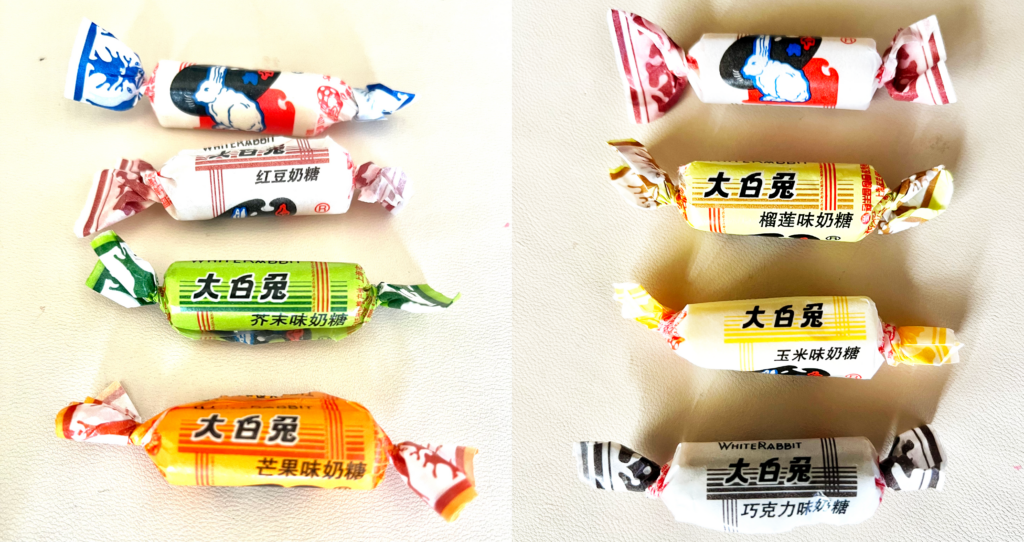
Happy Halloween!
06
Sep 2022Half
Life has been hectic at the start of a new semester, amidst a (fading???) pandemic. BUT, one personal milestone has passed in August: my Chinaversary. This one marks 22 years.
And 22 is actually kind of special, because that’s half my age. I’m not quite there yet, but in a few months, I will have been in China fully half of my life.
That’s kind of a weird fact to absorb.
18
Aug 2022Wooo-Laaa-Laaa
I am amused at the bold use of the name “Wooo-Laaa-Laaa” at this restaurant in a Shanghai mall:
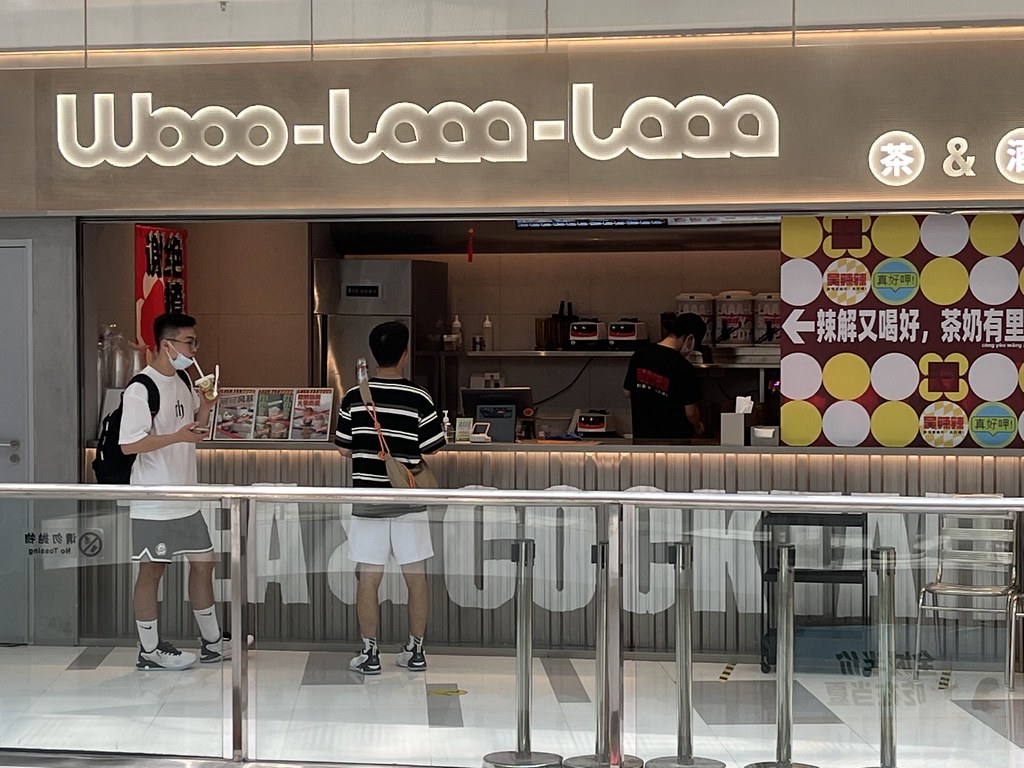

The Chinese name is 吴辣辣 (Wú Là Là), and while 吴 may be the surname of the owner (or maybe not), and 辣 clearly leads one to expect spicy food here, they really wanted to do the (French?) “woo-la-la” thing with the restaurant name, which is an interesting choice!
I noticed a similarly bold and informal name at this restaurant called 蛙来哒 (Wā Lái Dā). The 蛙 refers to the bullfrog meat served there, but since 蛙来哒 sounds like 外来的 (wàilái de), which could potentially refer to alien visitors, the restaurant apparently took that theme and ran with it.

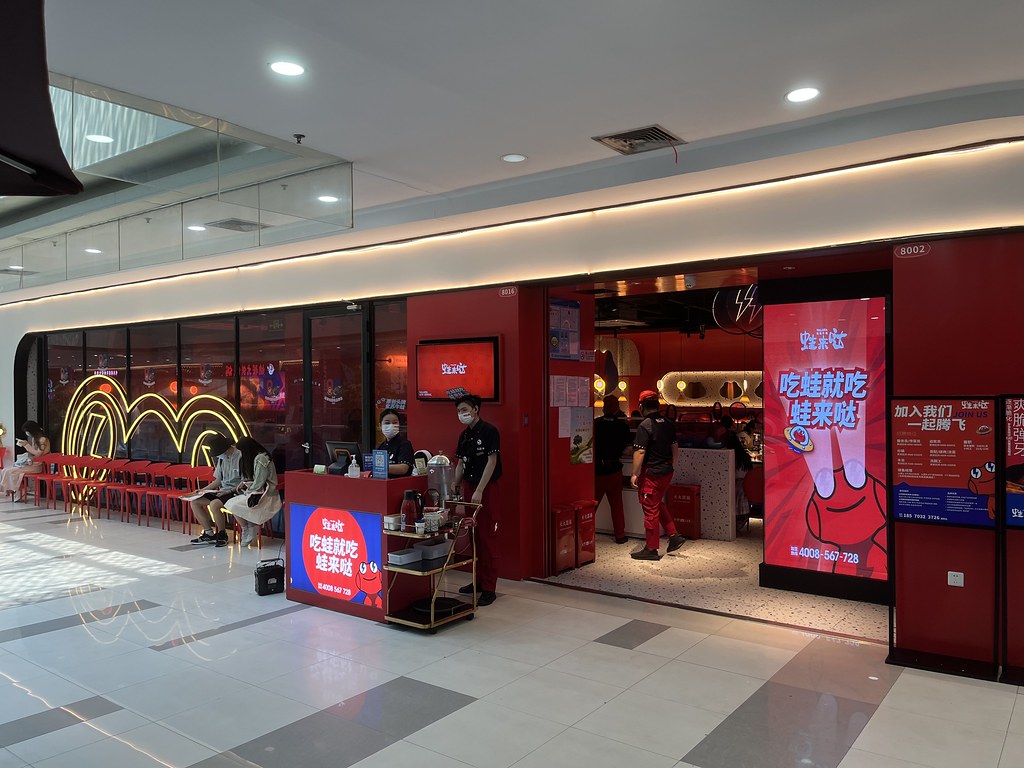
But the character 哒 (dā) is quite informal, becoming popular only in the past 10-20 years. It’s sort of a “contraction” of 的 and 啊, and has been widely used online as part of the cutesy phrase 么么哒 (me me dā), sort of like the “mwah” kissy noise.
So these two restaurant names are quite a departure from the normal types of Chinese restaurant names you see in a mall. It’s fun to see this kind of thing.
Anyway, with the way the food and beverage industry in Shanghai was brutalized by the lockdown and other super-strict covid preventative measures this year, it’s good to see new restaurants appearing again.
10
Aug 2022Sanya Style
This is just a random shot I snapped of a cafe/bar in the 后海村 (Hòuhǎi Cūn) area of Sanya. The surfboard, especially, makes the whole picture feel so different from the rest of my China experience, and there’s some fun stuff in what’s written in the Chinese as well. Just thought it was worth a share.

P.S. We left Sanya on August 1st, the very day that a bunch of COVID cases popped up there. We made it back to Shanghai OK, but we just barely dodged a bullet. If we had left a day later, we would have been stuck in lockdown in Sanya for who knows how long…
04
Aug 2022A Repurposed Chinese Character in Sanya
Last week I made my very first (and very overdue) trip to Sanya (三亚). Sanya is a city on the south side of the southernmost island off of mainland China. It’s basically the farthest south you can go on land in China. As such, it’s got a nice tropical climate and a bit of a beach party vibe (at least at the touristy places where most of us visitors from Shanghai end up).
The place we went is called 后海村 (Hòuhǎi Cūn), and it’s a smaller, relatively less developed part of the island focused on surfing. Yes, surfing… surfing tiny, tiny waves. I didn’t realize how small waves could be and still allow for “surfing” (of sorts) until this trip. Perfect for kids.
Anyway, there are lots of surf shops around the island, and I ran into this name on one:

The name of the shop was “Jile,” and the bottom character is clearly the traditional character 樂 (lè), which is 乐 (lè) in simplified. But what’s up with that top character? Is it even Chinese? Some of my Chinese friends with me weren’t even sure. So naturally I asked the staff in the shop about the character.
They explained that 亼 (jí) is a real Chinese character, but it was chosen for its visual appeal: it totally looks like a person (人) on a surfboard (一)! I thought that was really cool.
I later looked up the character 亼 in Pleco and found that it is a variant of 集 (jí). So literally, 亼樂 (Jílè) means something like “gather bliss.” It also has all kinds of other positive homophonic associations. Altogether a pretty cool name.
Then, checking the Outlier Character Dictionary within Pleco, I discovered that the ancient form of the character 亼 looks like this:

Sure, it looks like a letter “A,” but to extend Jile’s pictograph, it also looks like a person carrying the surfboard. It probably took that poor 人 a really long time to be able to put down that board and start surfing… Glad he made it in the end.
21
Jul 2022Does This Font Make the Character Unreadable?
I’ve been seeing this app icon in ads around Shanghai recently:
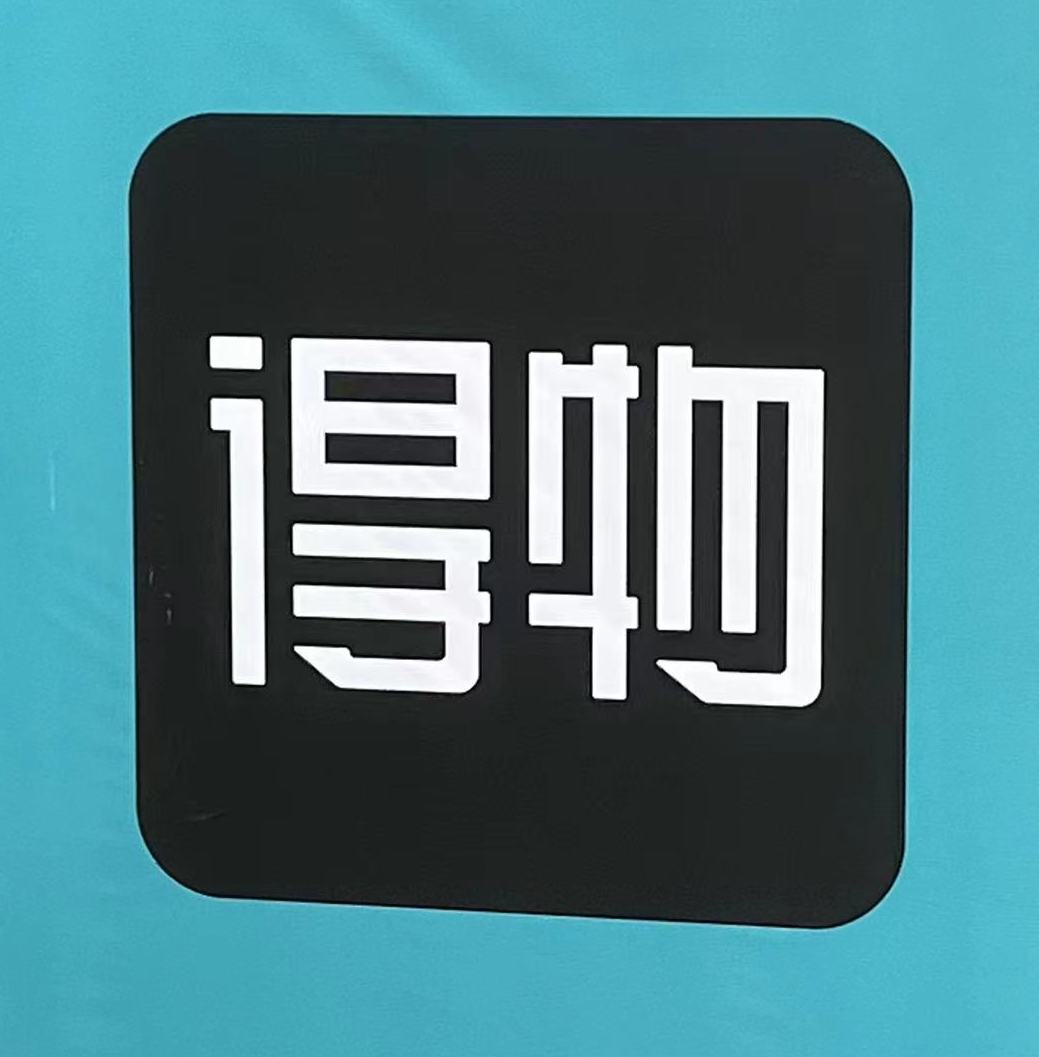
Can you read it? Specifically, I want to focus on the character on the left.
Whether you can read it is all about how you parse the different parts of the character. Clearly this structure is of the overall form ⿰, with the right half further breaking down into ⿱. Pretty standard.
Top right looks like 日, so that seems fine. But what about the left side and bottom right?
Left side looks most like 讠 (言字旁) to me. Maybe 氵 (三点水), since those bottom two strokes are sometimes run together. What it does not look like to me is 彳 (双人旁). But that’s what it is.
Bottom right looks like a deformed 于, and even reminds me of 毛 (but it’s clearly not that). However, it’s actually 寸 (with a stroke above it), and the 日 above is actually part of 旦. That’s quite a bit of stylization.
So the character on the left is 得 (dé). The app name is 得物 (Déwù).
I asked some native speakers what they thought about it, and their reactions ranged from “it is hard to read” to “it’s just a little artsy.”
This is the most egregious of “stylization making a character hard to read” that I’ve run into in a while. For me it was difficult to read, but guessable. But evidently non-native speakers are cool with it.
13
Jul 2022Eason and Lason
Two little personal stories about creativity, adaptation, and prejudice.
Eason
When I first heard this English name I didn’t like it much, and just chalked it up to “Chinese creativity” with English. Later I realize that “Eason” was actually the transcription (back to English) of the Chinese mispronunciation of “Ethan.” The spelling is a reasonable mix of the word “easy” and the name “Jason.” This made me like it less.
But then, after more observation and reflection, I realized that “Eason” is actually in some ways better than “Ethan” within a Chinese context, because older Chinese people here without any English skills can actually say “Eason,” whereas they have little hope of ever pronouncing the [θ] sound in “Ethan.”
So while I can’t say I like this name (the Name Nazi in me still insists that it’s not a real name), I get it now, and I have a newfound appreciation for it.
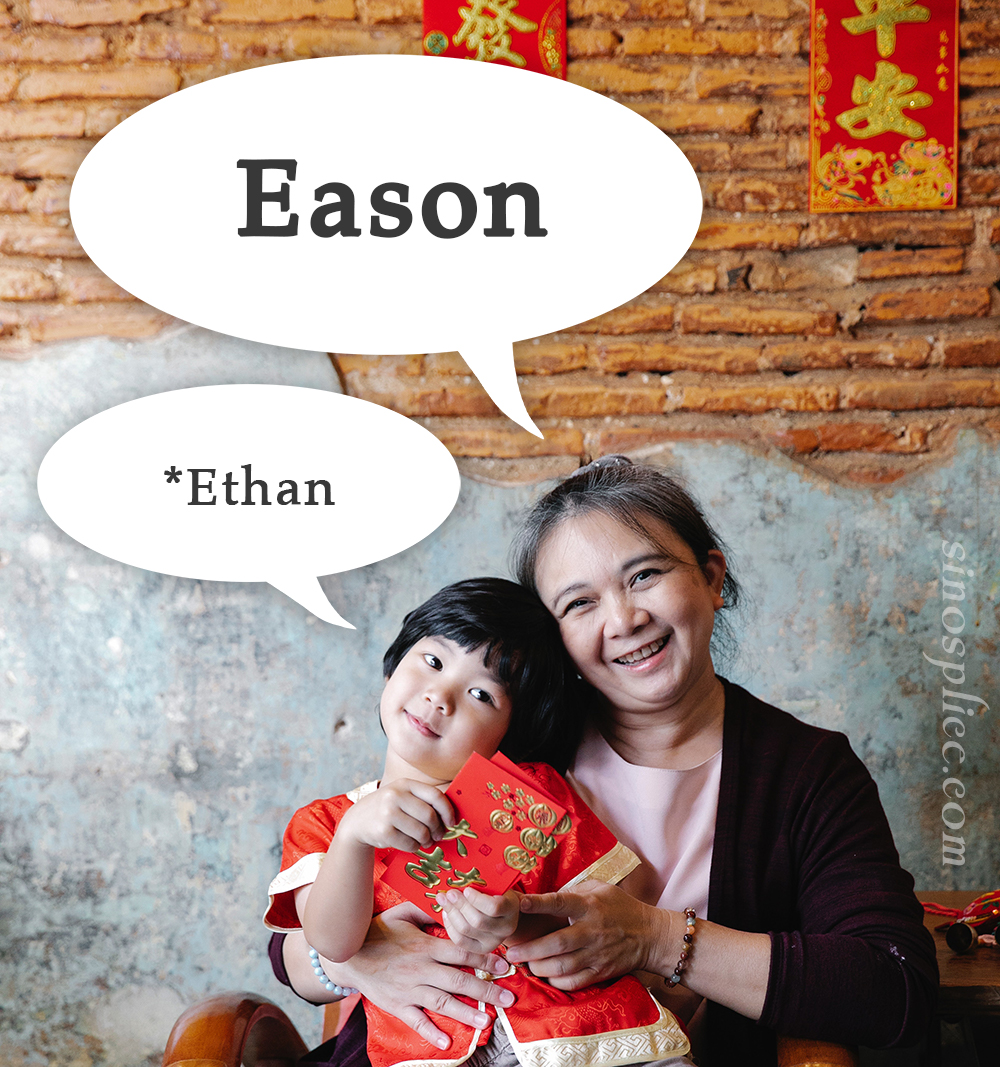
Lason
This is a name that always struck me as quite unusual. I assumed it was just a creative alternation of the name “Jason.” (Or maybe a kid wrote a backwards J that looked like an L, and thus “Lason” was born?)
After my realization about Eason, though, I suspect that this one is a double-whammy of mispronunciations converted back into English. This could be your standard “s” for “th” pronunciation substitution, combined with a (less intuitive) “L” for “N” substitution that you get in some Chinese regional accents. Hence, “Lason” from “Nathan.”
This English name has the additional amusing feature of sounding (to the Chinese) like the Chinese title for Thor, God of Thunder: 雷神 (Léi Shén).
I must admit, I struggle a bit more to accept this one. Not sure if it’s the perceived “double whammy of English mispronunciations” that does it, or if it’s the old Name Nazi prejudices, or if it’s just something aesthetic about it.
Conclusion
But anyway, Lason is gonna be Lason. My opinion doesn’t matter a whole lot in the grand scheme of things. An educator has influence, sure, but if Chinese society raises a whole generation of Lasons, they can change the landscape of English names globally. That’s kind of cool.
07
Jul 2022The Press: a nice Cafe/Restaurant in Shanghai
I don’t often write about food or restaurants here. Maybe it’s finally being able to actually eat in a restaurant that’s got me excited about it; I don’t know. But I really liked this restaurant near the Bund called The Press (申报饭店). It’s got cool old Shanghai Western-style architecture, plenty of Shanghai culture, Italian food on the menu (my kids loved it!), and great espresso-based coffee. We hung out here all afternoon on a weekend.

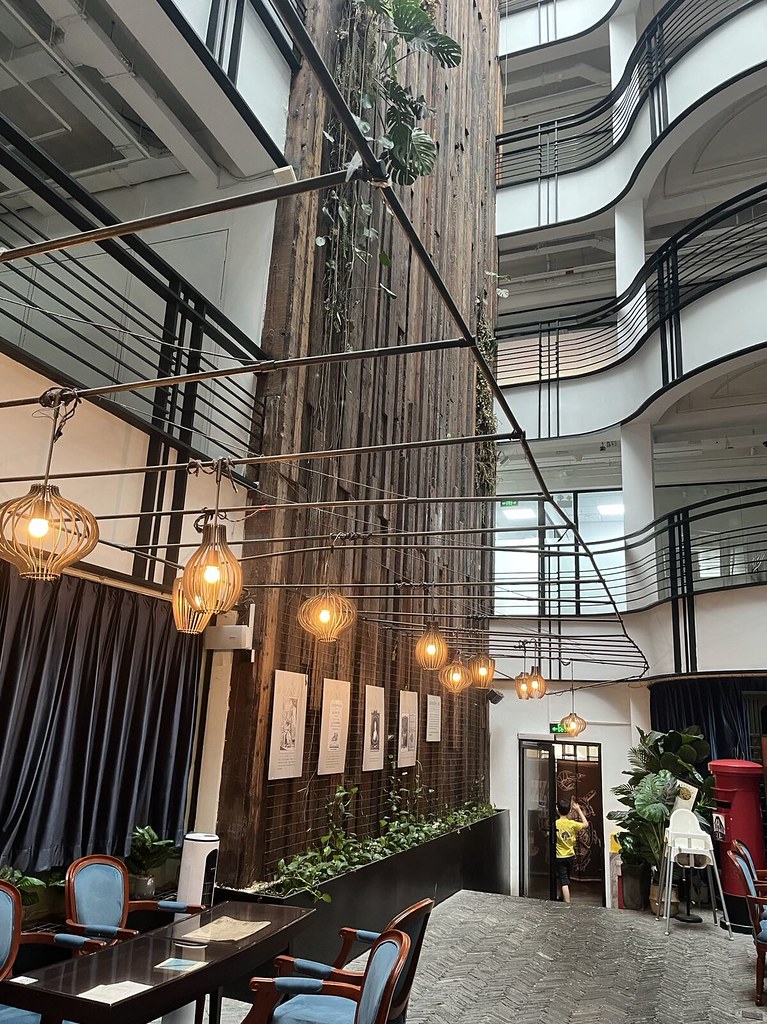

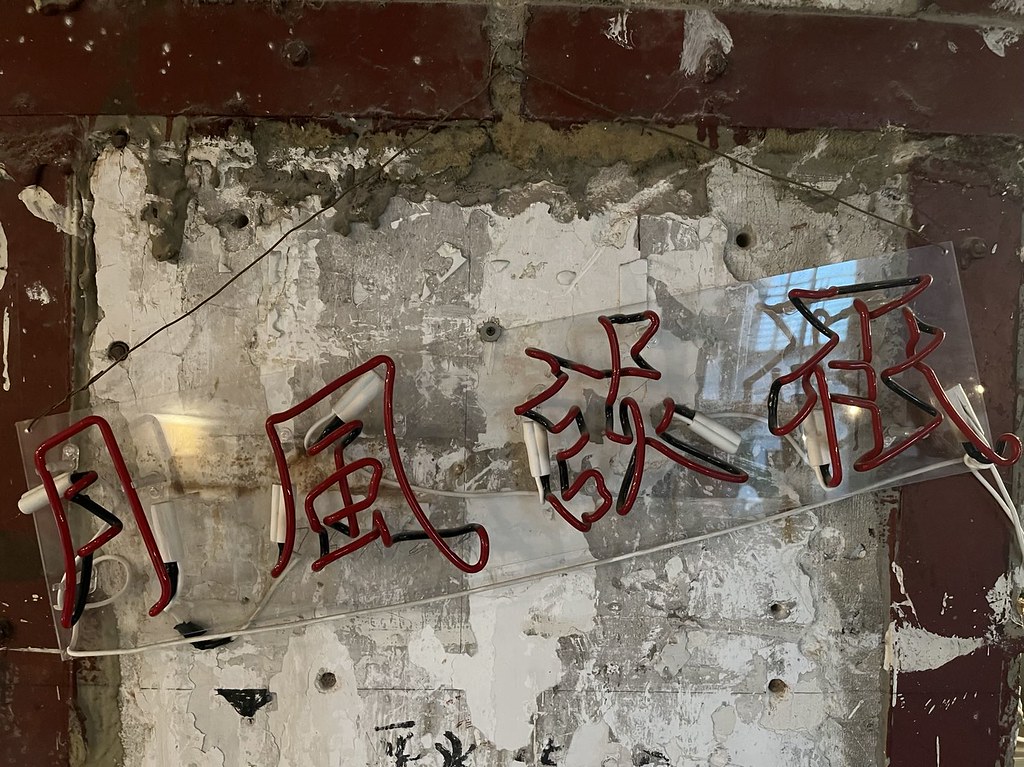
There’s something captivating about neon signs written in Chinese characters. Same principles as any neon sign, but it seems waaayyy more complicated to do Chinese characters.
This actually one reads right to left, but represented left to right it would be: 祗談風月 (in simplified: 只谈风月). Something like “just talk of beautiful scenery.”
Anyway, worth a visit: The Press (申报饭店).
29
Jun 2022Bianging around with Biang
After writing that blog post about the crazy Chinese character “biang“ a while back, I had to share this tweet by Alexander Zapryagaev @JPRidgeway about biang:
You think you saw biang? Get ready for:
- to make a biang sound
- to biang something
- wild biang in the forest
- chemical element biangium
- to catch a biang in the river
- River Biang
- to eat biang
- it’s raining biang
- World Capital of Biang
- the demon of Biang

This is a great illustration of how character components can impart meaning by combining with another character. If you’re a beginner to Chinese characters, you probably still recognize a few of these components. (Feel free to ignore the craziness that is biang!)
Learners: why not try the same exercise with a character that is not biang? You might accidentally “create” a character that already exists, but this is pretty cool in itself, because you can compare your own meaning with the actual meaning and learn something in the process!
24
Jun 2022Bad Translation Puzzle: “Divided”
I was at Shanghai’s Global Harbor mall the other day (it’s open, but there’s hardly any business, and eat-in dining is still prohibited at restaurants), and I saw this text on the window:

A zoomed in version of the key part:
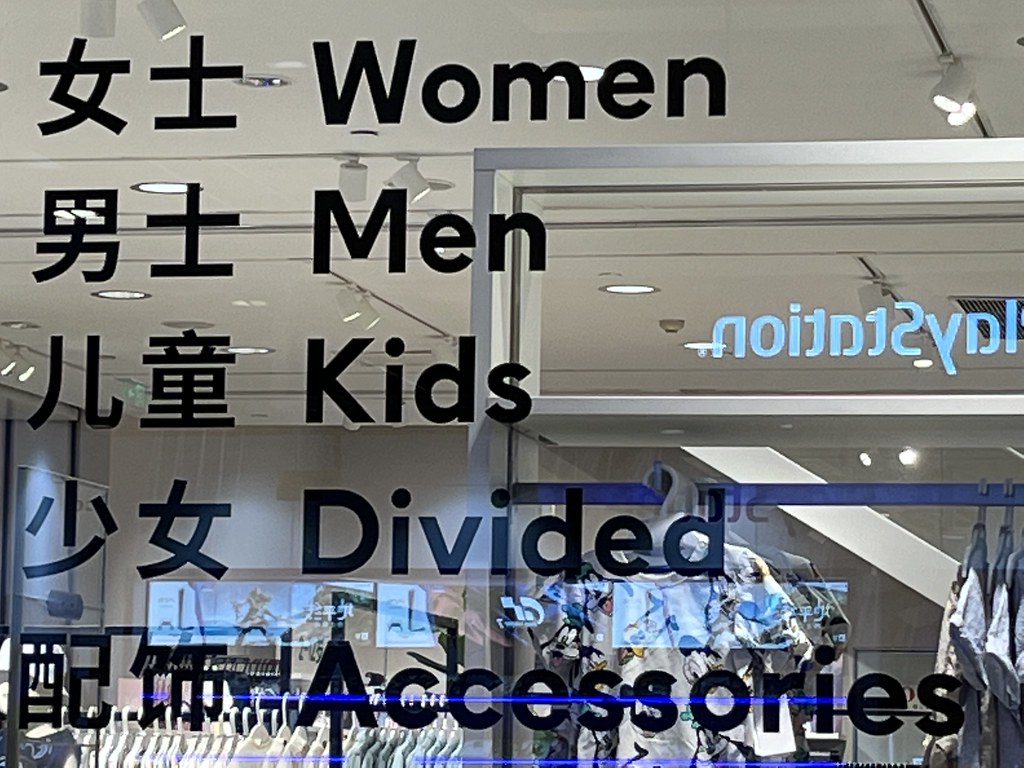
My 10yo daughter spotted it and was rightly confused by it. 少女 (shàonǚ) means “young woman” (girl in her early teens), and I suppose in a clothing story that would be “juniors” or something similar. Anyway, I can’t figure out how anyone could possibly get the translation “divided” out of 少女. Often errors like this are a result of over-reliance on machine translation, and usually it’s not too hard to figure out how the bad translation happened. Not so easy in this case!
The only thing I can think of is the word 少于 (shǎoyú), which means “less than.” It’s at least math, but still not an explanation. Otherwise, something like 分类 (fēnlèi), meaning “categories” (of clothing) could be a source, I suppose. “Categories” are sometimes referred to as “divisions.”
UPDATE: OK, I utterly failed this “translation puzzle.” Apparently H&M simply calls their “juniors” department “Divided.” Considering that the other departments are just direct translations, this possibility didn’t even occur to me. Thank you, commenters!
15
Jun 2022Lobby, I think
I love this image:

I love it because it’s so simple, and yet to appreciate it you need an understanding of Chinese vocabulary which goes beyond simple memorization (you need to understand a bit about the morpheme 吧), and you also need to be familiar with multiple translation possibilities of the particle 吧. So all kinds of translations for 吧 like “let’s” or “right?” or “I guess” or even “I think” really do make sense.
And now the breakdown just in case this one is still a bit beyond your level:
- 大堂 (dàtáng) lobby (of a hotel)
- 吧 (bā) is sometimes an abbreviation of 酒吧 (jiǔbā), meaning “bar”
- 吧 (ba) is also a grammatical particle
So 大堂吧 (dàtáng bā) refers to a Lobby Bar/Lounge, in no uncertain way.
This image will also be in an upcoming issue of the free ARC (Advanced Readings in Chinese) Newsletter, and we’re starting to do more with jokes and memes these days, so please sign up if you like this kind of thing.
06
Jun 2022Shanghai Lockdown Aftermath
So as of June 1st, 2022, Shanghai has ended the city-wide lockdown, and we are once again “free.” With some qualification, of course. Free to go outside, wearing a mask, but not free to enter any public building or use public transportation unless you have NAT (nucleic acid test) results from the past 72 hours. And since it typically takes close to 24 hours to get the results, yeah… we’ve gotta do a lot of testing. For the entire month of June, I’m hearing. Fortunately the swabbing is universally fairly gentle now, in the back of the throat rather than way up in your nasal cavity.
June 1st, the first day out, was pretty ridiculous in that almost no stores were open, and everyone seemed to have gone out just to find a public testing spot and then line up for hours to get a test done. Those free public tests were only available for limited hours (1:30 to 4pm was the afternoon slot), and the lines were worse than Disney World.
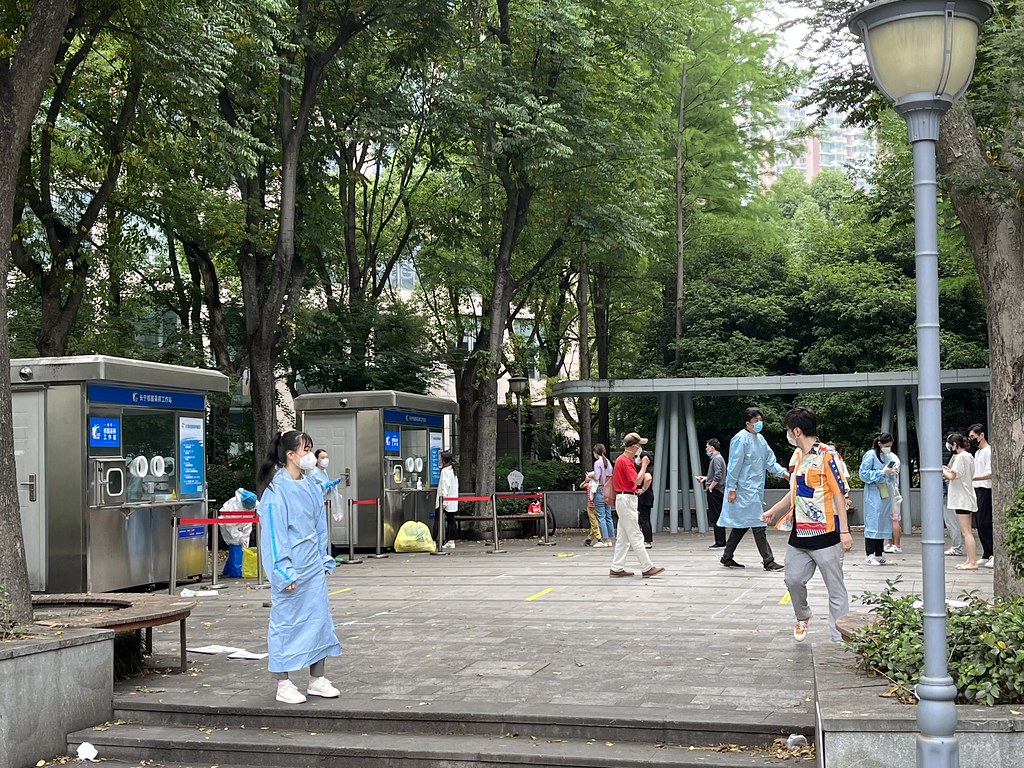
I waited until almost 3:45pm on Wednesday, June 1st to get mine done in a public testing center near my home, trusting that the results would be speedy. The results were not speedy. In fact, they never came out at all! I almost wasn’t allowed back into my own office building after lunch on that Thursday because I no longer had a valid “negative” result within that 72-hour window. Apparently this kind of thing is fairly common. My co-worker almost wasn’t able to take the subway to get home from work. His results came out just in time for him to go home an hour later.
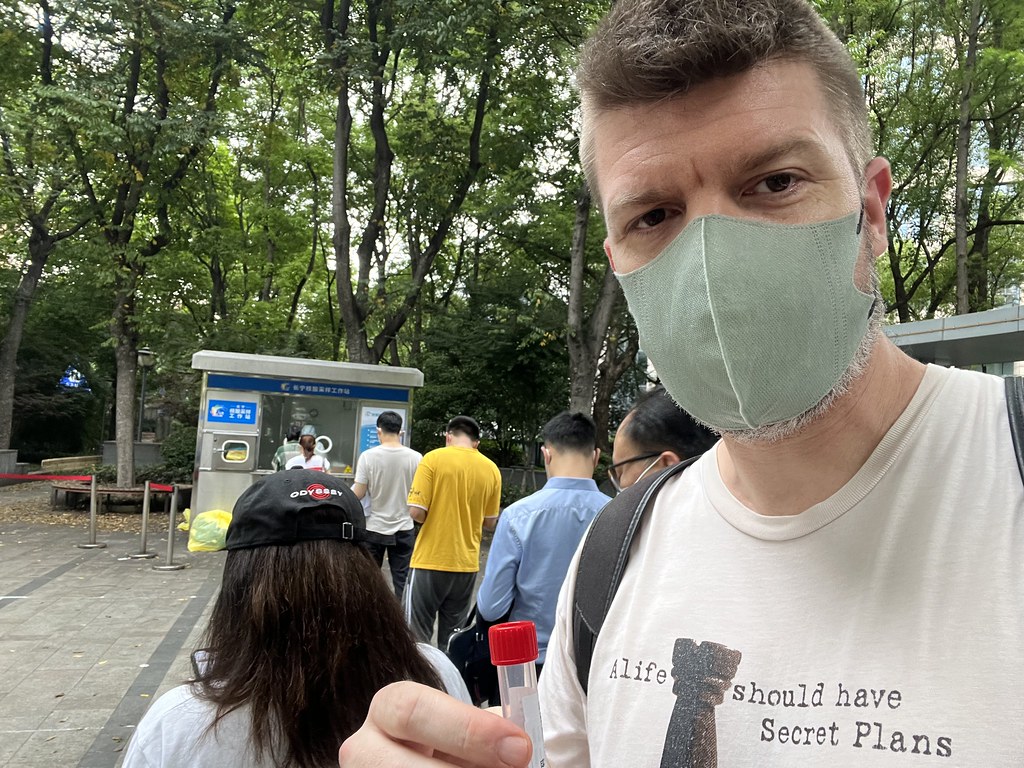
Most Shanghai residents I talk to are resigned to just getting a test every day wherever is convenient. Some apartment complexes still have free tests for residents. After those first few days, waits in public testing spots are typically quite short already (under 5 minutes), and there really are free testing booths everywhere now. They’re clearly designed to be temporary.
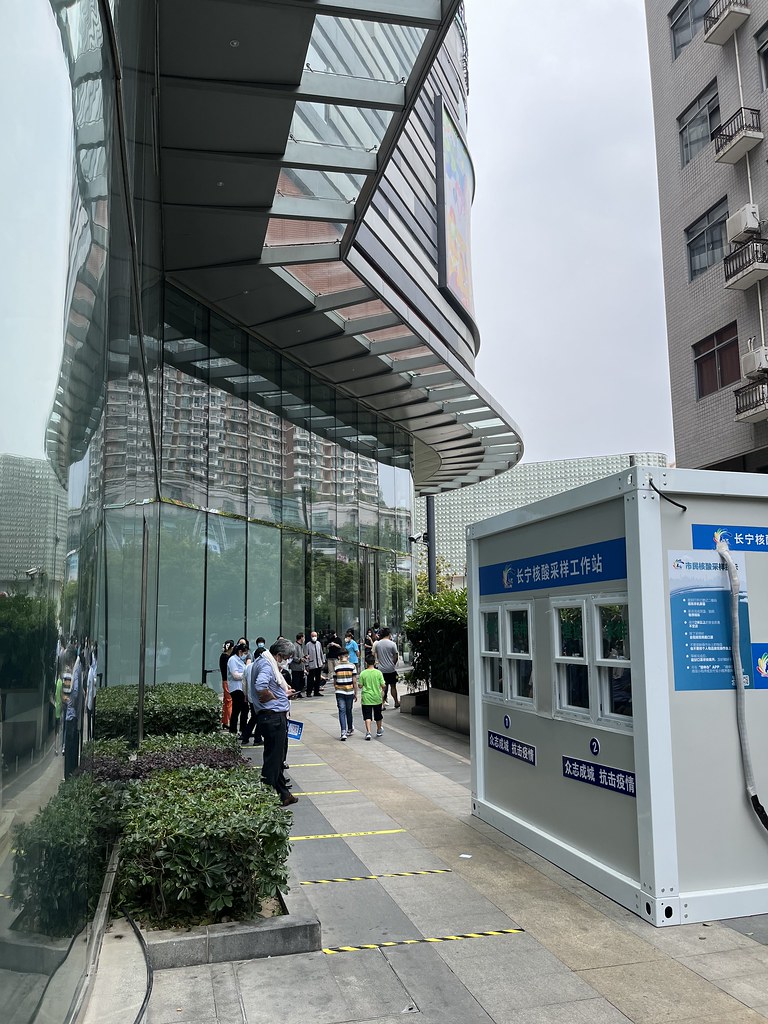
Let’s hope they’re temporary!
24
May 2022The Chinese Nickname for “Love, Death & Robots”
So you know the Netflix sci-fi anthology show Love, Death + Robots, right? Season 3 just dropped, and it’s being hailed as a return to form, almost as good as season 1, whereas season 2 was a bit of a disappointment. What you may not know is that the show is quite popular in China (or in Shanghai, at least). Due to its adult nature (violence, gore, nudity, sexual content), Love, Death & Robots was always going to have a hard time finding a prominent slot on any government-approved video streaming platform. But the show is super interesting in the ideas that it presents, and it does so in style, so Chinese sci-fi fans have been eating it up ever since season 1 come out.
Although each episode has a name, Love, Death & Robots also likes to use icons for each episode title. In fact, the name “Love, Death & Robots” itself is sometimes written in emoji as “❤️❌🤖.” So it’s not surprising that Chinese viewers have slapped a more interesting moniker on this show. While the official Chinese translation of Love, Death & Robots may be the expected 爱,死亡和机器人 (Ài, Sǐwáng hé Jīqìrén), the commonly used nickname in Chinese is the much shorter 爱死机 (Ài Sǐ Jī). Instead of an emoji per word, it’s a Chinese character per word. It gets the point across.
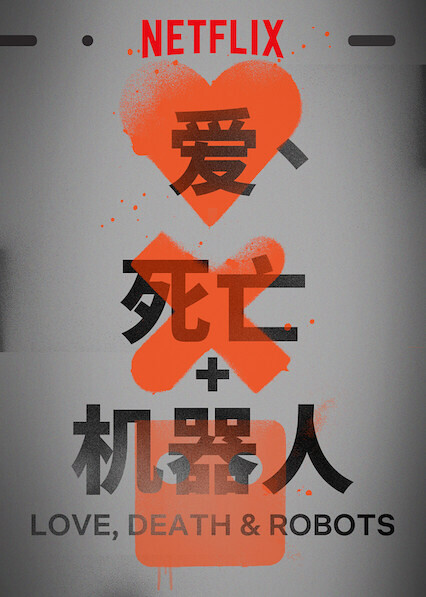
But what’s interesting about this nickname? Well, it’s not only used in writing; it’s also used in spoken Chinese. And when you hear 爱死机 (Ài Sǐ Jī) for the first time, whether you’re a native speaker or a learner, you have no idea what you’re hearing. It’s hard to make sense of. If you see the characters but are unaware that it’s the name of a sci-fi anthology series, there are still multiple possible interpretations:
- 爱死机 (ài-sǐ jī) to love to death a machine
- 爱死机 (àisǐ-jī) a machine that loves to death
- 爱死机 (ài sǐjī) loves to crash (the word 死机 is a common term for when a computer freezes up and needs a reboot)
- 爱死机 (Ài Sǐ Jī) ❤️❌🤖 (no one guesses this one)
So it’s kind of fun.
19
May 2022Chinese Capri-Sun is Down with Chinese Slang
I was surprised to see this on the Capri-Sun I ordered for my kids:
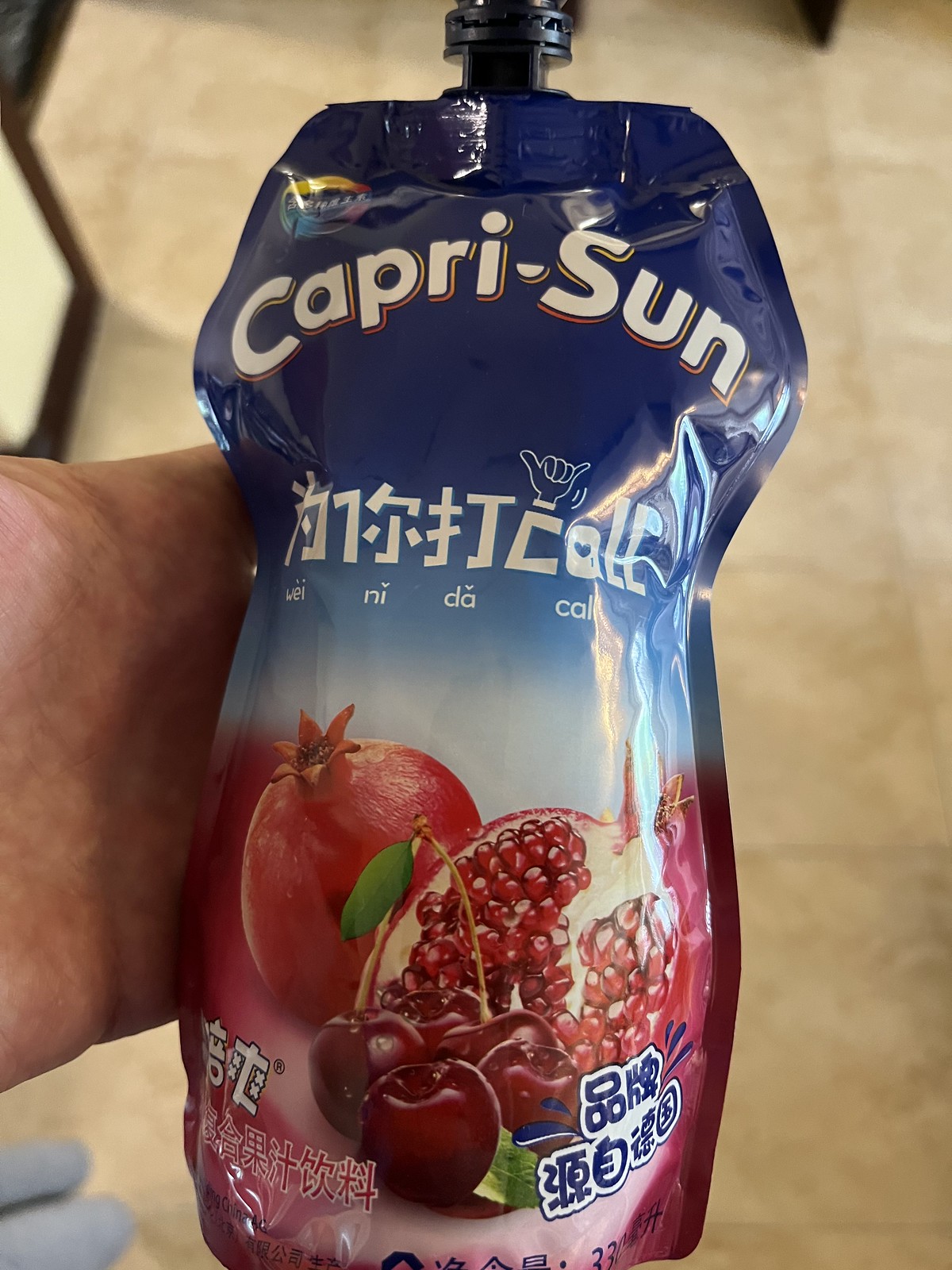
No Chinese for the name “Capri-Sun,” but the Chinese reads:
为 你 打 call
wèi nǐ dǎ call
I’m always wary of investing too much time into new Chinese slang, because a lot of it falls out of usage very quickly. 打call, however, seems to be withstanding the test of time.
Just for fun I asked my 10-year-old daughter (who attends an all-Chinese school) if she knows what “打call” means. She didn’t. She guessed it meant “to make a phone call.” This is a common guess among Chinese people that don’t know the term, so don’t feel bad if that’s what you thought too. Plus there’s that “hang loose” hand symbol which seems to reinforce the incorrect “make a phone call” interpretation.
“为你打call” simply means “to support you,” or “supporting you” might sound better in this context. Even though some Chinese people don’t even know it (mostly kids and old people; my wife knew it) It’s a slang term I feel is worth knowing, since it’s been around over 5 years already and has not disappeared yet. Plus, as you can see, it’s still appearing in companies’ marketing efforts.
Oh, and for more info on this use of 为, as always, check the Chinese Grammar Wiki.
11
May 2022Year 2-0-e-e
Here’s another pun for ya, in the context of the Shanghai 2022 Lockdown:
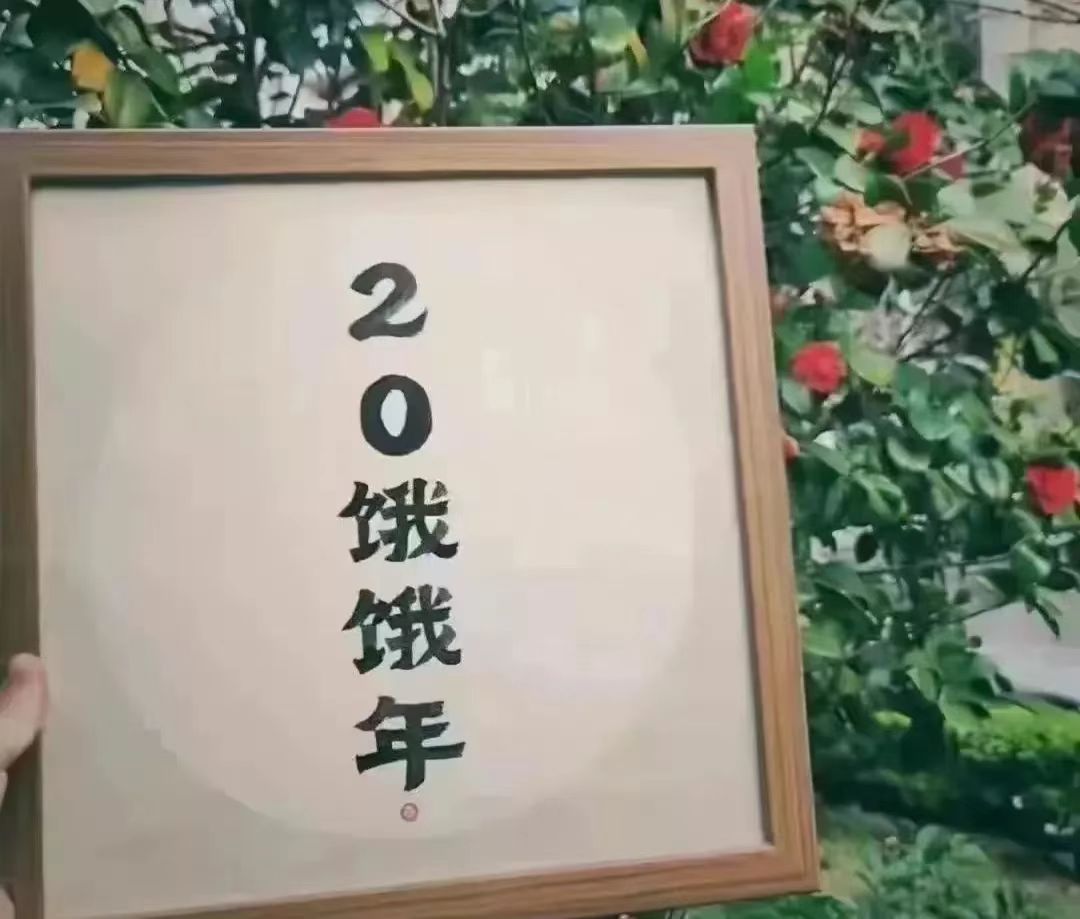
This one is pretty beginner-friendly!
20饿饿年 (èr-líng-è-è nián)
Key to this pun is that pinyin “e” sounds very much like pinyin “er” in many dialects of Mandarin, especially Taiwanese Mandarin. It doesn’t sound as similar in Beijing Mandarin, but the pun still works.
Fortunately, most of us are not actually starving during the Shanghai Lockdown, although some residents are certainly having a harder time than others. Although I’m currently on Lockdown Day 41 at home and can move freely around within my compound, many others in Shanghai are well past Day 50 and are totally stuck indoors, plus have to do daily testing (which I no longer have to do).
P.S. More advanced learners should be sure to check out the Advanced Readings in Chinese (ARC) special Shanghai Lockdown meme edition #1 and special Shanghai Lockdown meme edition #2. (If anyone wants a more thorough analysis of any of those memes here, let me know.)
03
May 2022Chinese Distorted: a Reading Challenge
This was floating around Chinese social media recently. If you’re at least intermediate level, take a look. It might take some time, but you should be able to slowly start making sense of these “characters”:

My first reaction was “what the–?? I can’t read this.” But within 10 seconds I was deciphering certain characters, and pretty soon I had read the entire thing.
I won’t post the electronic answer here, but if anyone wants it, I can leave it in the comments.
26
Apr 2022The Shanghai Lockdown, in Steps
Looking at the steps I’ve taken over the past month, it’s pretty easy to see three phases:
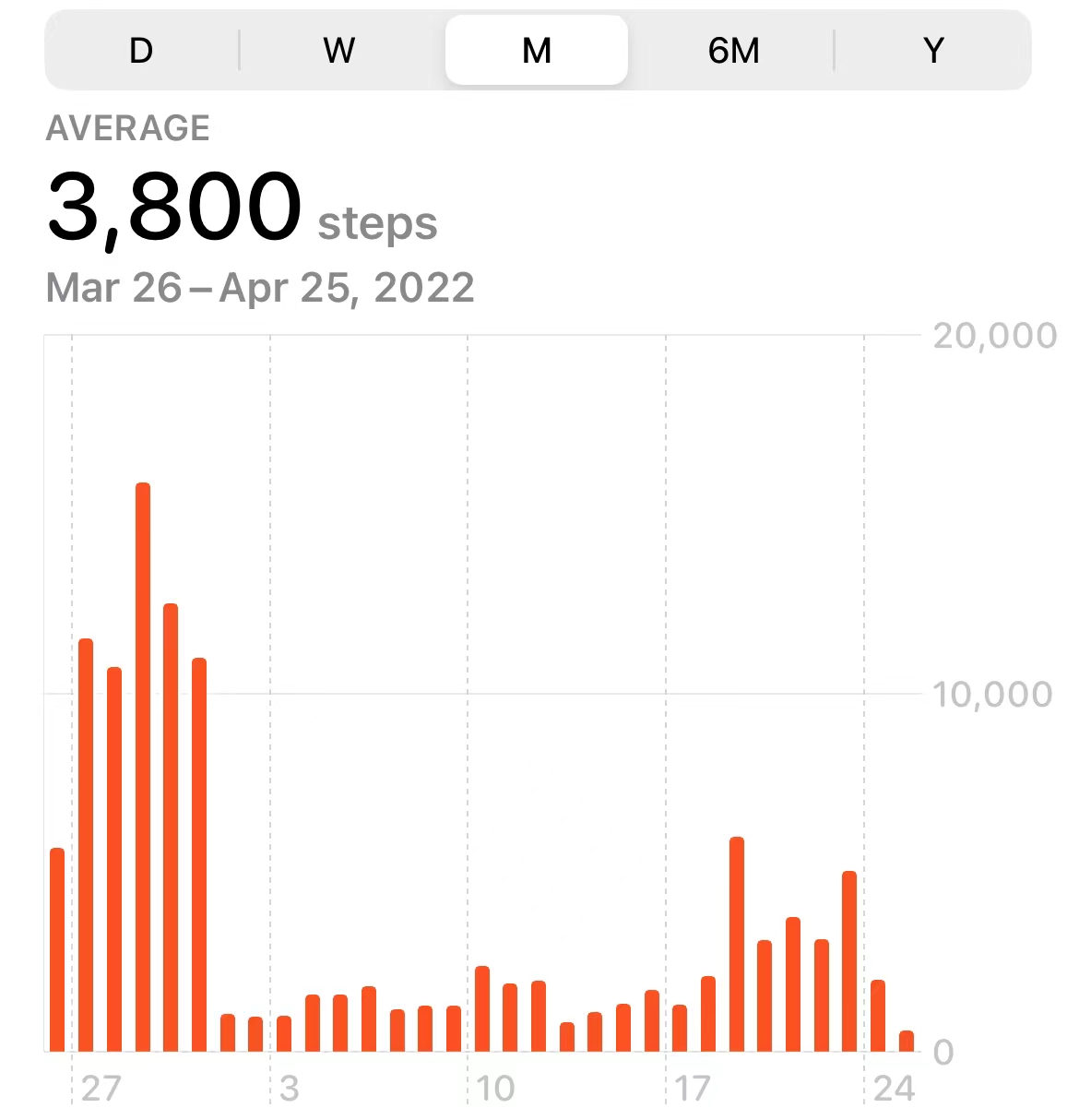
- Before the lockdown: I was getting good at averaging at least 10,000 steps per day.
- April 1st: the lockdown begins.
- April 19th: the strict lockdown (as a result of a positive case in my building) is lifted, and we’re allowed to go outside within our compound again.
We’re not sure when we’ll be able to leave our compound again (or when any shops will be open again), or when regular personal deliveries (non-group buys) will resume.
Meanwhile, there’s talk of a lockdown coming to Beijing…
20
Apr 2022Shanghai Lockdown 2022: the Neighbors
The last time I wrote about the April 2022 Shanghai Lockdown was April 7th, one week in (for me). It’s now April 20th and the lockdown continues, so it’s time for an update.
It’s not the Cultural Revolution all over again
First of all, I’d like to address some of the negative press the lockdown has received. I’m not enjoying this lockdown and I don’t think that government has handled it well (either in the big decisions or in the execution), but there’s still exaggeration in the western press, so I want to call it out.
This account is from the Guardian (April 19, 2022):
In the past few days, neighbours start to denounce each other in our WeChat group. Some days it was about who didn’t get a PCR test, other times it was about who tried to sneak out for food. In my friend’s compound, neighbours even start to call the police when they see someone getting downstairs or talking in a group.
I can see the uncanny resemblance between being “positive/suspicious” now and being “intellectual/bourgeois” in the 1960s during the Cultural Revolution.
OK, so of course this writer’s experience is different from my own. My compound might have had it easier (although my own building was fully sealed when a positive case was discovered on another floor). I have never had COVID. I’m not alone; I’m at home with my family, and all of us are doing OK mentally.
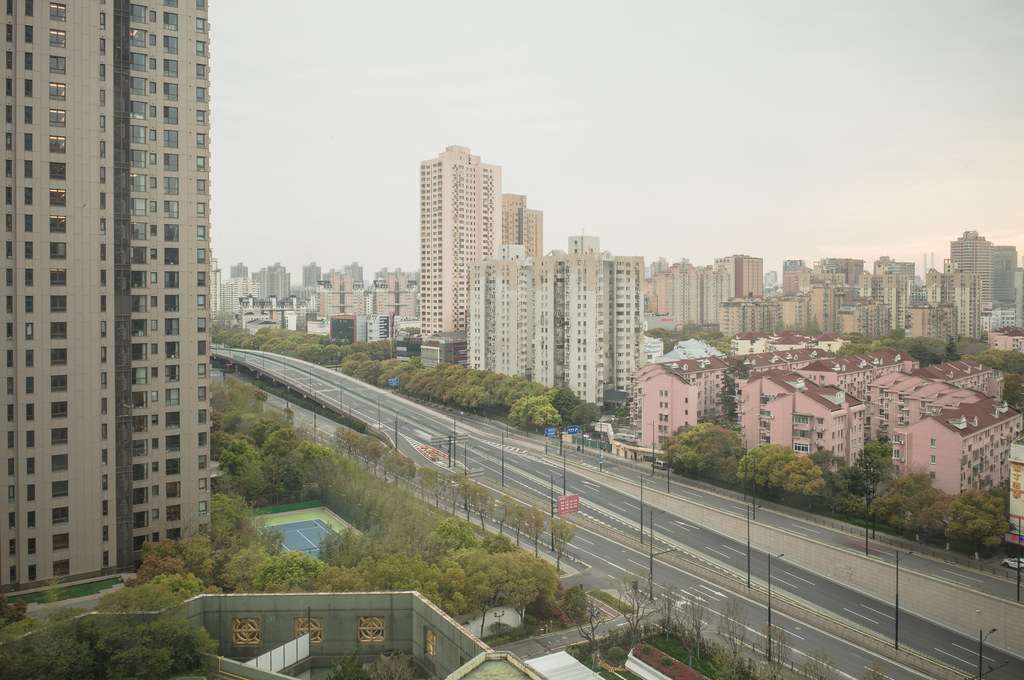
But this comparison to the Cultural Revolution really is over the top. And my experiences with my neighbors have been the exact opposite: rather than turning on each other and “denouncing” each other, relations have turned from chilly and distant (the unfortunate default in this city) to warm and helpful. I’ve honestly never felt closer to my neighbors. We’re just pulling together to make sure we all get food, can take care of our kids and pets, etc. When the one household had a positive case, no one in the building WeChat group reacted angrily. I saw nothing but positive support.
You can hear me discussing this situation on the You Can Learn Chinese podcast below (full episode is on SupChina here):
Q&A: Robots and Food
Finally, a little Q&A from an email (shout out to April!), because I’ve heard this question multiple times as a result of reports in American media:
Q: Do you see the robot dogs walking thru town asking you to stay in-doors? (saw this on YouTube).
A: No, no robot dogs (or robots of any kind). I’ve heard there are drones monitoring, but haven’t seen any myself. It’s not widespread.
Q: How is your food supply? Do you have enough food or is it delivered?
A: We have plenty of food, although we don’t have a lot of freedom to choose it. We just group order (with the other people in our building) whatever we can get when we can. Still, plenty of milk, eggs, rice, meat, etc. (Bread and fruit sometimes run out, though.)
Lockdown Changes
As of yesterday (April 19th), restrictions were loosened on both my building and on our apartment complex as a whole. We can’t leave our compound, but we can go outside again. (This is a huge plus for those of us with kids and dogs!)
It’s actually a lot like things right before the lockdown… the kids are still doing school from home. The biggest difference is that I still can’t go to the store or have most things delivered. So group buy (团购) is still the norm for getting food. (Epermarket is getting a lot of business from me this month!)
But even deliveries are starting to open up a bit. Hema (盒马) has apparently resumed deliveries to some areas, although it’s impossible to get an order in before they sell out. I hear that some restaurants and shops are resuming individual delivers (without the group buy minimum order of 1000+ RMB).
We’ve been doing tons of testing in April, both in the form of self-test antigen kits and nucleic acid PCR tests administered by others. that finally seems to be calming down too.
I’m expecting home schooling and work from home to resume for weeks still, but I’m holding out hope that regular deliveries will resume before too long. There’s hope!
14
Apr 2022More Coffee Puns from Shanghai
I brought you a bad coffee pun about a “boozy latte” from this same robot coffee provider before. They just keep on coming! Here’s two more:

Yes, that’s right… this is an ad for a corn-flavored latte. Gotta give them points for originality, right??
This main line in the ad is a pun on 玉米 (yùmǐ), meaning “corn” (literally “jade rice”) and 遇见 (yùjiàn), meaning “to meet by chance.”
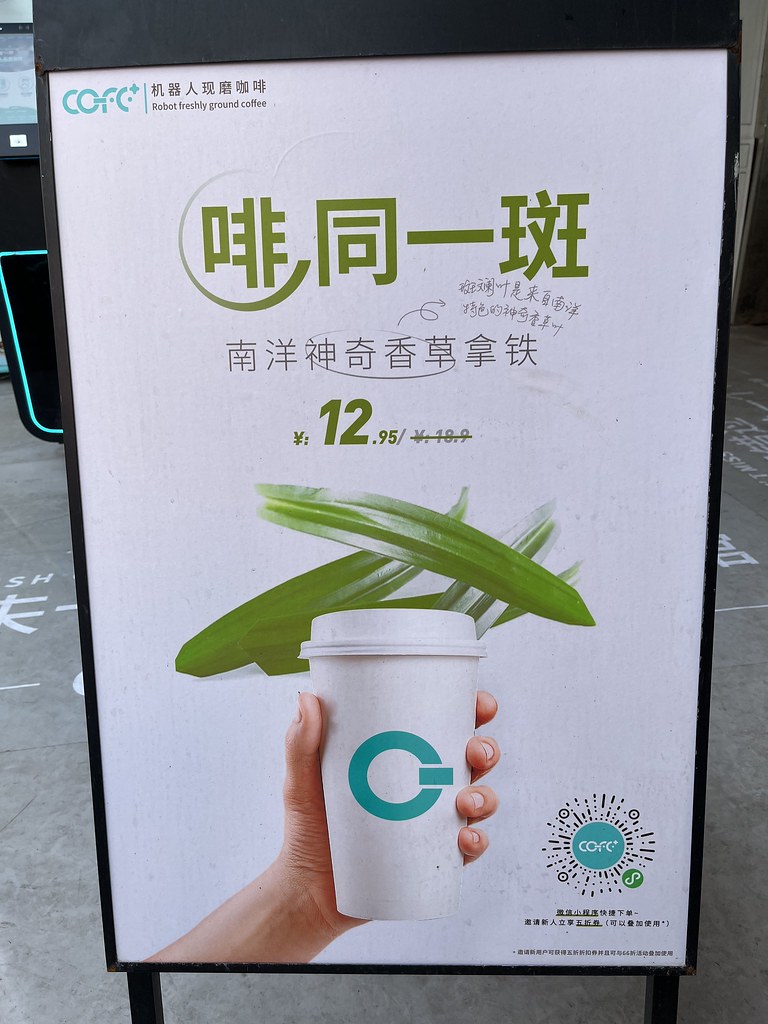
This pun is based on the phrase 非同一般 (fēi tóng yībān), which literally means “not the same as average,” implying “better than average” or “very special.” The idea is that “this is not your average cup of coffee.”
The pun comes in by swapping out the 非 (fēi) for the same sound in the word for “coffee,” which is 咖啡 (kāfēi). The same thing happened to the 般 (bān) with the character 斑 (bān), which means “stripes” or “spots,” (as in 斑马 (bānmǎ), “zebra”), which here relates to 斑斓叶 (bānlán yè), the pandan leaves in the picture.
These photos were taken a while ago, before the April 2022 COVID Lockdown in Shanghai. I’ve never had either of these (and I’m especially uninterested in corn-flavored coffee!). I do wonder if this bad punning robot coffee is going to survive… It’s been over a year since I wrote this:
I never ever see people buying coffee from these kiosks. I don’t expect them to be around much longer.
Perhaps this coffee company exists simply to make these bad puns non-stop…
07
Apr 2022Shanghai Lockdown so far (April 2022)
By now it’s not news that all of Shanghai is back in lockdown. It started for me on April 1st, and there’s no end in sight. SupChina gives a good rundown of the situation, and this old Shanghainese man’s perspective is definitely worth a read. (Fortunately the issue with parents and children being separated has already been resolved a few days ago.)
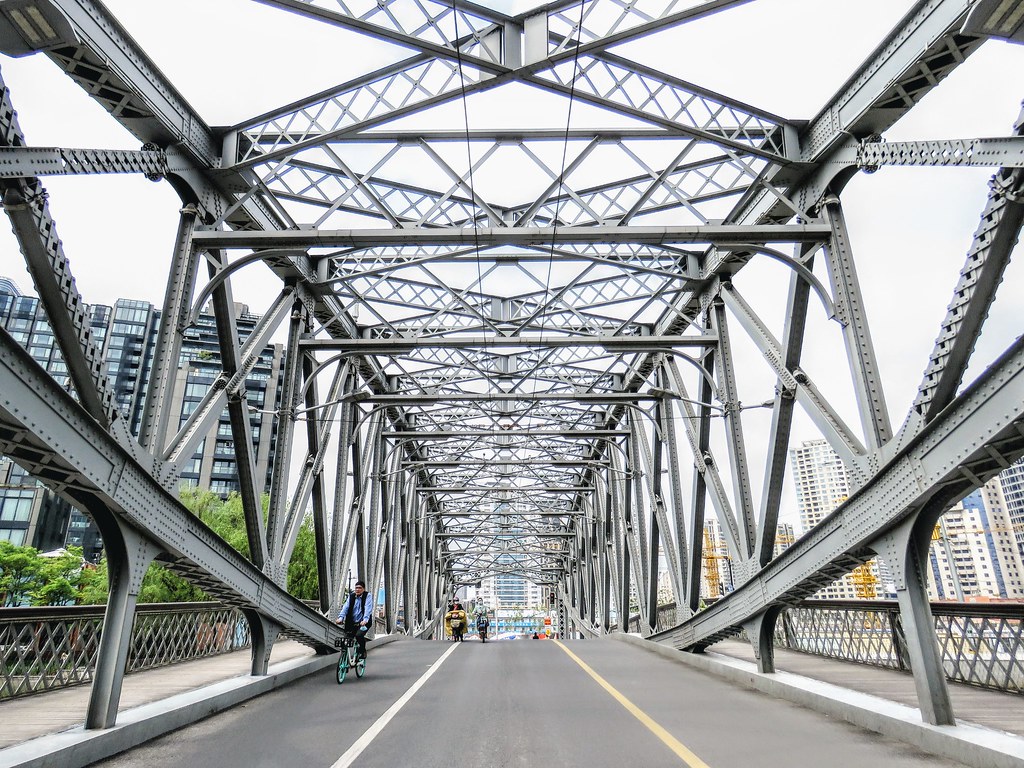
So now that the “news” is out of the way, I’ll just share a bit about how 2022 is different from 2020.
- In 2020 we never feared running out of food. There were shortages (toilet paper, anyone?), but the deliveries never stopped.
- In 2020 we could still go out, but we mostly chose not to. That’s because…
- In 2020 we were actually afraid of the virus. We felt there was a chance it could kill us or someone we love. In 2022, no one is actually afraid of getting sick anymore.
- In 2022 we are afraid of getting put on lockdown (which has now already happened), or worse, testing positive and getting separated from our families and sent off to an isolation center who knows where.
- In 2020 we could still take our dogs out to relieve themselves.
- In 2020 there was no testing (for most of the year?), but now it’s just happening all the time, over and over
- In 2020 there was fear, but energy was high. In 2022 we’re just so COVID-weary…
- In 2020 there was confidence and pride in the government’s ability to properly deal with the situation while the rest of the world floundered. In 2022 that confidence and pride still exists, but it’s quickly eroding and getting worse every day.
And now just a few tidbits about daily life under lockdown:
- I’ve heard stories (and seen videos) of people running out of food. I personally don’t know anyone who has run out of food, but we’re all living under the constant “background” fear of running out. We’re checking all of the food delivery sites every day to see if any are accepting orders again or can finally deliver the food we ordered days ago. When the government provides a free bag of food (it’s happened to me once so far), we gleefully accept it and take a picture of exactly what we got, which we then share with all of our friends on WeChat.
- Deliveries in many communities have stopped, simply because they’re no longer allowed to deliver to our doors or even our buildings, and it’s too much work for the building management to be constantly running piles of packages to every building. Only emergency packages or food get priority.
- The kids continue with online schooling, of course. My kids are fine. In fact, my son (7yo) voluntarily washed his own dishes for the first time ever after breakfast today. (Win!)
- Everyone is working from home, of course, but it’s hard for parents, with the kids in the house and the constant anxiety over COVID. We find ourselves checking 10 different WeChat groups every 10 minutes to see if there’s any news, if policies are changing, if anyone we know has tested positive, if any food deliveries will be resuming soon, if there are any new videos or memes, etc. etc. It’s hell on productivity, I can tell you!
- One positive side effect is that we’ve all been thrown into WeChat groups with our neighbors, and are now actually communicating with them for the first time (albeit over WeChat)! Relations with neighbors in modern Shanghai are notoriously distant in most apartment buildings… it’s normal to not know or ever even talk to your next-door neighbor. And now the dog owners in our complex have a group, and each building has a group… we commiserate, we share info, we notify each other when the latest test results are out, and we even go in one “group buy” food purchases. This part is pretty cool.
- BUT, even while under lockdown for so many days (this is day 7 for me), new positive cases are popping up (but nearly all without symptoms). There was one in my building. It’s mystifying and frustrating. The contagiousness of the omicron strain is just more powerful than all of these drastic measures being taken. That’s the most frustrating part… to see the same thing tried over and over again, expecting a different results. The refrain that we see again and again is, “using 2020 measures for the different 2022 situation.”
We’ll get through this. We’re not being ravaged by war, most of us are not actually getting sick. So we’re trying to count our blessings.
